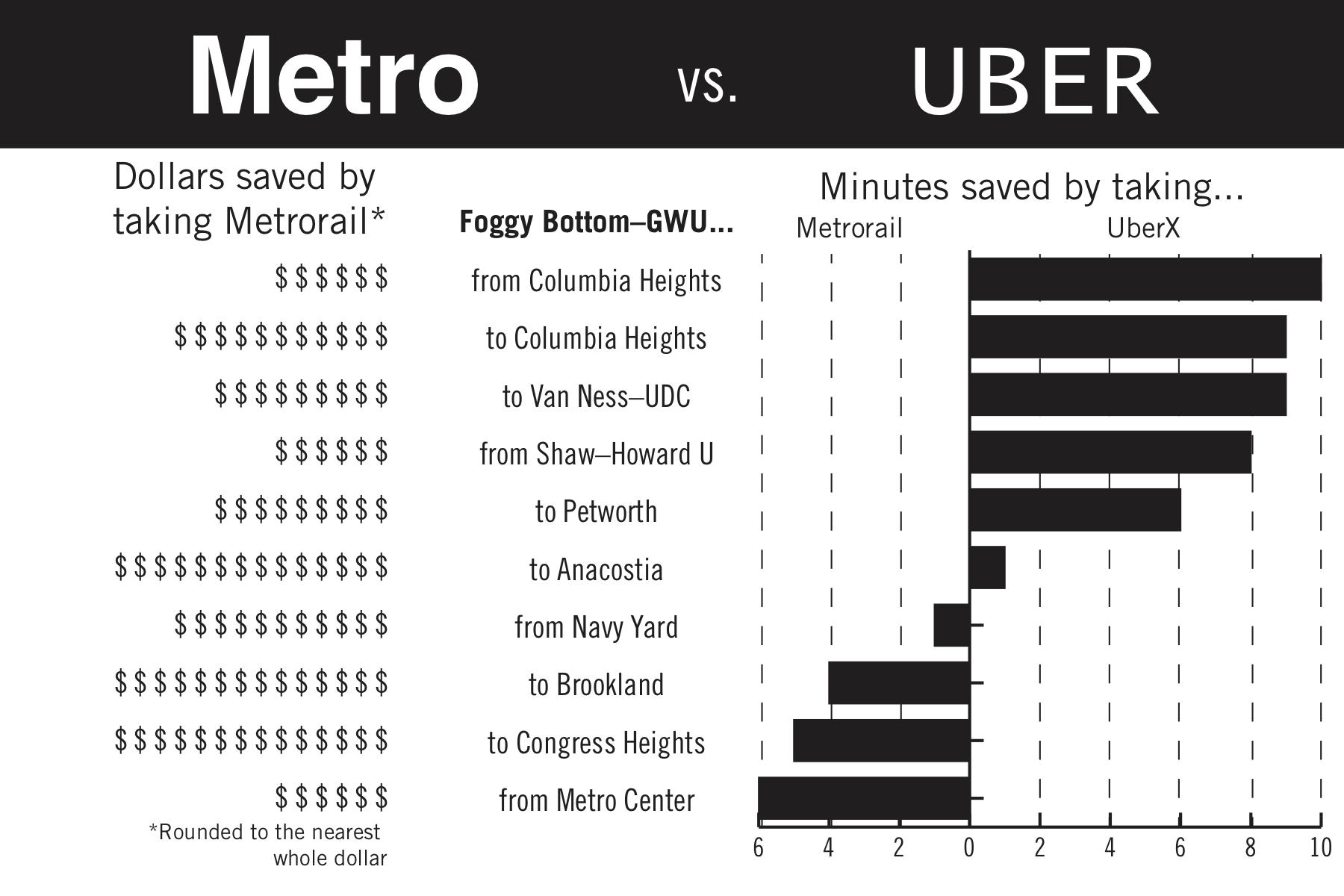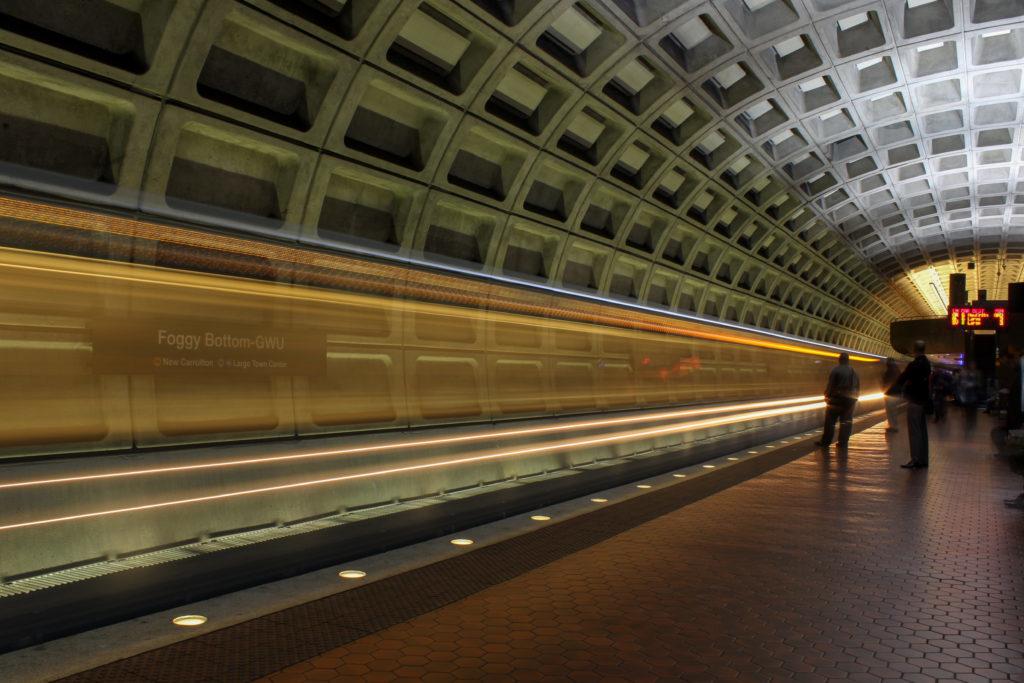Traveling to Foggy Bottom by Metro is cheaper than taking Uber but not faster, according to a new city analysis.
When traveling between Foggy Bottom and destinations across the District, Uber was 2.7 minutes faster than Metro, while Metro was about $10 cheaper than taking an Uber, according to data from District, Measured — a blog run by D.C.’s Office of Revenue Analysis. Experts and students said travelers often prefer the convenience of calling transportation directly to a given location over the crowds and delays of public transportation.
The data calculated trips from Foggy Bottom to the Anacostia, Brookland-CUA, Columbia Heights, Congress Heights, Petworth and Van Ness-UDC Metro stations. Trips to Foggy Bottom from Metro Center, Navy Yard, Shaw-Howard University and Columbia Heights stations were also included in the analysis.

Yonah Bromberg Gaber | Graphics Editor
Source: District, Measured
Uber is a standard private ride that seats between one and four passengers, while UberPOOL is cheaper but seats multiple parties in the same ride in a carpool system.
Ian Savage, an economics professor at Northwestern University, said people tend to be deterred from using public transportation because it is often not possible to travel directly to a given location and passengers typically have to wait at a station for a train to arrive.
“If you just did a pure time comparison, the Metro may very well be faster. The thing is though, to get to the Metro you have to walk to the station, which is a lot more unpleasant than sitting inside a car,” Savage said.
The analysis calculated the price and duration of 114 trips between Metro stations across the District using data from the Metro trip planner, the Uber app and Uber Movement, a company-run website that tracks ridership data, including travel times. The office then created a data visualization where users can input their own walk and delay times to determine which travel method would be faster for their particular trip, according to the agency.
The data accounts for a three-minute wait for each Metro train, a 10-minute walk to the station, a five-minute wait for an Uber and an additional five minutes for UberPOOL. UberPOOL was on average $3 cheaper than taking Metro, according to the data.
City-wide, Metro was about $12.43 cheaper and 0.36 minutes faster than Uber and about $4.15 cheaper than UberPOOL using the average of 114 trips to 76 destinations, according to the data.
Traveling to and from Dupont Circle, Metro was faster than Uber by an average of 1.8 minutes. Metro was about $12 cheaper than Uber and $4 cheaper than UberPOOL, according to the data.
Ron Holzer, a spokesman for the Washington Metropolitan Area Transit Authority – the agency that runs Metrorail – said Metro is usually faster and more cost effective than other city transportation options. Metro has a lower cost per mile than Uber or taxi services, he said.
“Now that the year-long SafeTrack emergency maintenance program is over, Metro is again an attractive option for midday and evening trips,” he said, referring to the program that stopped service on several lines for portions of last year during system-wide repairs.
Data from the American Public Transit Association and Transportation Research Board shows that passengers tend to use ride-sharing services more frequently when the public transportation is running infrequently or is unavailable to their intended destinations, he added.
From the Foggy Bottom station, ridership has been steadily decreasing since 2012, when the station had an average of 22,827 weekday boardings as opposed to 18,862 boardings in 2016, according to Metro statistics.
Overall, daily Metro ridership has tumbled from 744,918 to 612,652 since 2010 – a decrease of about 18 percent, according to the data.
Representatives from Uber did not return requests for comment.
Susan Shaheen, the co-director of the Transportation Sustainability Research Center at the University of California, Berkeley, said ride-sharing services compete with public transit, but they can serve as two components of the same trip.
“What we find is shared mobility services can help to fill gaps in the public transit network, including things like late-night transportation services,” she said.
In 20 interviews, most students said they prefer the convenience of Uber or Lyft over Metro. They said they would mainly use Metro if the weather was nice because of the lower cost and specifically for trips where they can travel a direct route without any transfers.
But students largely said they opt for Uber because of the convenience of ordering transportation directly to their door.
Freshman Laura Bishop said she uses Uber more often because the prices end up being comparable with Metro when she splits the price of the ride with other passengers.
“I don’t think Metro is that convenient for me having to walk all the way across campus to get to the stop so if the price was significantly lower like maybe a dollar instead of comparable to the ridesharing prices,” she said.





